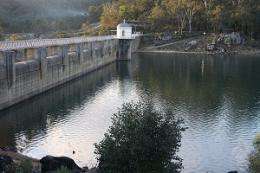Policy study weighs up water catchment uses

A national methodology for protecting the sources of drinking water – while accounting for recreational needs in surface water catchments – is being developed by Edith Cowan University researchers.
Funded by Water Quality Research Australia, the study explores the relationship between the general public's requirement for safe drinking water and the demands of special interest groups who want drinking water catchments opened up for recreational use.
ECU Centre for Planning Professor Geoff Syme, one of the authors, investigated public perceptions and looked at the trade-offs between drinking water quality, treatment cost, recreational requirements and professional risk assessments, using WA as a case study.
The aim is to develop policies that account for all stakeholders' points of view.
In WA, the current policy for drinking water protection is to enforce a 2km exclusion zone with a much larger surrounding area, giving only limited and prescribed access for recreational activities.
"While there was a consensus among professionals [that] the current policy of catchment management had worked for more than 100 years, there was far from detailed agreement as to the science of how and why it had worked," Prof Syme says.
"The science of the adverse effects of recreation on water quality, while having some considerable support, was doubted by others who observed recreation occurring in water catchments elsewhere in Australia and overseas without any apparent ill-effects.
"There were obvious concerns about significant benefits being foregone in restricting access for recreation in the catchments and clear indications there was growing dissatisfaction with abilities to fully enjoy recreation activities of choice.
Prof Syme says these competing factors place substantial pressure on public water utilities to ensure the provision of safe drinking water.
"As the health risk profile increases, there is a need for additional barriers which may include new or upgraded water treatment facilities," he says.
In the original proposal, it was believed the risk assessment model developed by the Cooperative Research Centre for Water Quality and Treatment would form the basis of the methodology chosen for the final phase of Prof Syme's project.
"But it soon became evident an alternative method was needed," he says.
"A risk-benefit methodology was developed, underscored by a multi-attribute utility approach [a structured methodology designed to handle the trade-offs among multiple objectives] and interpreted through a group technique of cross-impact assessment.
"Cross-impact matrices were developed for each policy option – a simple method to identify significant issues that will need to be addressed when planning for the implementation of a policy in the future."
Provided by Science Network WA


















